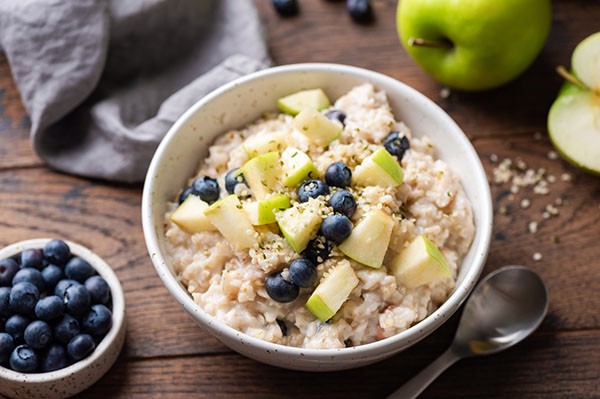Experiencing the discomfort of acid reflux or heartburn? Gastroesophageal reflux disease (GERD) affects millions, and dietary choices play a significant role in managing its symptoms. Knowing What Foods To Avoid For Acid Reflux can significantly improve your quality of life. This guide provides a detailed look at dietary adjustments to help you minimize acid reflux and heartburn.
Understanding the Link Between Food and Acid Reflux
While past recommendations often leaned towards bland diets, modern understanding emphasizes a more nuanced approach. Many delicious and healthy foods can be part of a GERD-friendly diet. However, some foods are known triggers, increasing the likelihood of acid reflux and heartburn. Identifying and limiting these foods is crucial for effective symptom management.
Common Acid Reflux Trigger Foods: What to Avoid
Certain foods are more likely to exacerbate acid reflux symptoms. Consider limiting or avoiding the following:
- High-Fat and Fried Foods: These foods take longer to digest, increasing the pressure in your stomach and the likelihood of stomach acid flowing back into the esophagus. Examples include fried chicken, french fries, and fatty cuts of meat.
Alt text: A close-up shot of golden brown french fries piled on top of each other, illustrating high-fat foods that can trigger acid reflux.
- Spicy Foods: Ingredients like chili peppers contain capsaicin, which can slow digestion and irritate the esophagus, intensifying heartburn.
- Citrus Fruits and Juices: Oranges, grapefruits, lemons, and limes are high in acidity, which can irritate the esophageal lining.
- Tomato-Based Products: Tomato sauce, ketchup, and even raw tomatoes can be highly acidic and trigger reflux.
- Vinegar: While used in many dishes, vinegar’s acidity can be problematic for those with acid reflux.
- Chocolate: Contains methylxanthines, which can relax the lower esophageal sphincter (LES), allowing stomach acid to flow back up.
- Caffeine: Coffee, tea, and energy drinks can also relax the LES and increase acid production.
- Onions: Can irritate the esophagus and increase stomach acid production.
- Peppermint: Despite its soothing reputation, peppermint can relax the LES, leading to reflux.
- Carbonated Beverages: The bubbles in soda and sparkling water can increase stomach pressure, forcing acid into the esophagus.
- Alcohol: Relaxes the LES and can irritate the stomach lining.
Identifying Your Personal Trigger Foods
Not everyone reacts to the same foods in the same way. Keeping a food diary can help you pinpoint your specific trigger foods. Eliminate suspected foods from your diet one at a time and track your symptoms. After a few weeks, reintroduce the food and monitor for any adverse reactions.
GERD-Friendly Foods: What to Include in Your Diet
While avoiding trigger foods is important, focusing on GERD-friendly options can also significantly reduce symptoms. Here are some beneficial foods to incorporate:
- Non-Citrus Fruits: Bananas, melons (cantaloupe, watermelon), apples, and pears are generally well-tolerated.
 Bowl of oatmeal with fruit
Bowl of oatmeal with fruit
Alt text: A comforting bowl of oatmeal topped with fresh blueberries and chopped green apple, next to a small dish of mixed berries and a halved apple, ideal breakfast for acid reflux.
- Vegetables: Most vegetables are low in acidity and easy to digest. Focus on steamed, baked, or grilled options. While tomato sauce may be a trigger, raw or lightly cooked tomatoes might be tolerated in smaller amounts.
- Lean Proteins: Grilled, baked, or poached chicken, turkey, fish, and tofu are excellent choices. Avoid frying or adding high-fat sauces. Flavor your meals with fresh herbs instead of spicy seasonings.
- Whole Grains: Oatmeal, brown rice, whole-wheat bread, and couscous are good sources of complex carbohydrates and fiber, promoting healthy digestion.
- Healthy Fats: Replace saturated and trans fats with unsaturated fats from sources like olive oil, avocados, nuts, seeds, and fatty fish (salmon, trout).
Optimizing Eating Habits for Acid Reflux Relief
Beyond specific food choices, mindful eating habits can also play a crucial role in managing GERD:
- Smaller, More Frequent Meals: Eating smaller meals throughout the day prevents overfilling the stomach and reduces pressure on the LES.
- Avoid Lying Down After Eating: Remain upright for at least 2-3 hours after meals to allow gravity to help keep stomach acid down. Avoid napping immediately after lunch or dinner.
- Don’t Eat Before Bed: Refrain from eating for at least 3-4 hours before bedtime. Late-night snacks can significantly increase the risk of acid reflux.
- Avoid Vigorous Exercise After Eating: Intense physical activity shortly after eating can force stomach acid into the esophagus. Wait a few hours before exercising.
When to Seek Medical Advice
While dietary and lifestyle changes can effectively manage GERD symptoms for many people, it’s essential to consult a doctor if:
- Symptoms are severe or persistent despite dietary modifications.
- You experience difficulty swallowing or pain when swallowing.
- You have unexplained weight loss.
- You notice blood in your stool or vomit.
Your doctor can recommend further testing, medication, or other treatment options to alleviate your symptoms and prevent complications.
Conclusion
Managing acid reflux often involves identifying what foods to avoid for acid reflux and adopting healthier eating habits. By understanding your trigger foods and incorporating GERD-friendly choices, you can significantly reduce discomfort and improve your overall well-being. Remember to consult with your doctor or a registered dietitian for personalized guidance and support.
